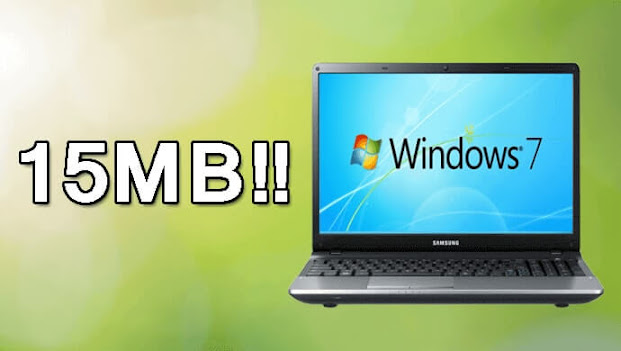Windows 7 is an operating system that was produced by Microsoft and released as part of the Windows NT family of operating systems.
It was released to manufacturing on July 22, 2009, and became generally available on October 22 of the same year, and is the operating system for use on personal computers, including home and business desktops, laptops, tablet PCs, and media center PCs.
It is the successor to Windows Vista, released two years prior. Windows 7's server counterpart, Windows Server 2008 R2, was released at the same time.
The last supported version of Windows-based on this operating system was released on July 1, 2011, entitled Windows Embedded POSReady 7.
On January 12, 2016, Microsoft ended support for Internet Explorer versions prior to Internet Explorer 11 on Windows 7.
On January 12, 2016, Microsoft ended support for Internet Explorer versions prior to Internet Explorer 11 on Windows 7.
Extended support ended on January 14, 2020, aged 10 since the release of Windows 7, after which the operating system ceased receiving further support or security updates (with exceptional security updates being made e.g. in 2019, to address potential ransomware threats, like BlueKeep) to most users.
Windows 7 was primarily intended to be an incremental upgrade to Microsoft Windows, addressing Windows Vista's poor critical reception while maintaining hardware and software compatibility.
Windows 7 continued improvements on Windows Aero (the user interface introduced in Windows Vista) with the addition of a redesigned taskbar that allows applications to be "pinned" to it, and new window management features.
Other new features were added to the operating system, including libraries, the new file-sharing system HomeGroup, and support for multitouch input.
A new "Action Center" interface was also added to provide an overview of system security and maintenance information, and tweaks were made to the User Account Control system to make it less intrusive.
A new "Action Center" interface was also added to provide an overview of system security and maintenance information, and tweaks were made to the User Account Control system to make it less intrusive.
Windows 7 also shipped with updated versions of several stock applications, including Internet Explorer 8, Windows Media Player, and Windows Media Center.
WINDOWS 7 HIGHLY COMPRESSED DOWNLOAD
Windows 7 OS: - You can easily download and you will find many websites on the Internet from where you can download and use the Windows 7 product key for free.
If you want to install or reinstall Windows 7 OS, you can download the Windows 7 ultimate highly compressed 100% working bootable iso image from our website, and with the help of (power ISO), you can make it bootable in Pendrive or USB flash drive and As well as super highly compressed PCs.
Windows 7 system requirements
Windows 7 system requirements
If you want to run Windows 7 on your PC, here's what it takes:
- 1 gigahertz (GHz) or faster 32-bit (x86) or 64-bit (x64) processor
- 1 gigabyte (GB) RAM (32-bit) or 2 GB RAM (64-bit)
- 16 GB available hard disk space (32-bit) or 20 GB (64-bit)
- DirectX 9 graphics device with WDDM 1.0 or higher driver
Additional requirements to use certain features:
- Internet access (fees may apply)
- Depending on resolution, video playback may require additional, memory and advanced graphics hardware
- Some, types of games and programs are might require a graphics card compatible with DirectX 10 or higher than for the optimal performance.
- some of Windows, Media Center functionality, is a TV tuner, and additional hardware that may be required.
- Windows Touch and Tablet PCs require specific hardware.
- HomeGroup is required, a network, and on PCs running Windows 7.
- DVD/CD is authoring requires a compatible optical drive.
- BitLocker requires, Trusted Platform Module, (TPM) 1.2,
- BitLocker To Go requires a USB flash drive,
- Windows XP, Mode, requires an additional 1 GB of RAM and an additional 15 GB, of available in hard disk space.
- Music and sound require, audio output,
- Product functionality and graphics. may vary based on your system configuration. Some features are may require advanced or additional hardware.
PCs with multi-core processors:-
PCs with multi-core processors:-
Windows 7, was designed to work with today's multi-core processors.
All 32-bit versions of Windows 7 can support up to 32 processor cores, while 64‑bit versions can support up to 256 processor cores.
System requirements
| Component | Operating system architecture | |
|---|---|---|
| 32-bit | 64-bit | |
| Processor | 1 GHz IA-32 processor | 1 GHz x86-64 processor |
| Memory (RAM) | 1 GB | 2 GB |
| Graphics card | DirectX 9 graphics processor with WDDM driver model 1.0 | |
| Storage space | 16 GB | 20 GB |
| Installation media | DVD drive or USB drive | |
----------------------------------------------------------------------------------------------------------------------------
Physical memory limits of Windows 7
| Edition | Processor architecture | |
|---|---|---|
| IA-32 (32-bit) | x64 (64-bit) | |
| Ultimate | 4 GB | 192 GB |
| Enterprise | ||
| Professional | ||
| Home Premium | 16 GB | |
| Home Basic | 8 GB | |
| Starter | 2 GB | N/A |
----------------------------------------------------------------------------------------------------------------------------
Related:- 5 Best Bootable Softwares for PC
Make Bootable Pendrive Of This ISO Image
Click Here To Download:-
Before You Download This Windows 7 ISO Image | First Watch This Video
Click Here To Watch This Video
Related:- Download Winrar To Extract This Windows 7 ISO
Download Link





![Windows 10 Highly Compressed Download in 10 MB Latest Version [2020]](https://blogger.googleusercontent.com/img/b/R29vZ2xl/AVvXsEigVJCQFDhbExz7kjjeRe8GBtNiTWraPkOKGAHmwAZW9mZZ3jcHqyWWz_Bs2HoSc1aYHpZxROQtf4zgnQX_rNDNRIaPrxS7sna8egUrT7EPngkLiF0Rjs8KtQdJJ4IsY52iQzyfER0r2Ois/w100/windows10-laptop.png)
0 Comments